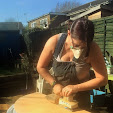A rare emergence from hibernation for me, which just goes to show how strongly I feel about this matter.
I have just received the weekly newsletter from my younger son's school. Said son is in the throes of exams for the lower sixth form (the first of two years of non-compulsory further education which serve as a springboard for those who wish to go on to higher education).
The very first article in the newsletter focusses on the kids the year ahead of my son. In other words, those in the upper sixth. It includes the following:
Students seeking work or higher education places after Sixth Form have never before found the competition so tough. More students across the country are competing for fewer available places and many of our students must obtain A grades in a number of subjects (even A* in some cases) for university entry.
Our recent experience is that universities will not bend the requirements if students miss a grade. The need for students to revise really thoroughly has never been so vital.It's all about grades! Other things get taken into consideration, sure, but only if you get the grades in the first place.
My son's results earlier in the year were very worrying. His teachers were at a loss: his homework is always submitted on time and is always 100% correct. But his exam results didn't even qualify for the word 'disappointing'. 'Terrifying' would be closer to the mark.
We are currently spending a fortune on private tutors in attempt to help this boy learn some exam skills, so that he can reproduce under exam conditions the levels of competency he demonstrates in the classroom. If he doesn't succeed at that, his lifelong career dreams will become even more difficult to achieve.
How can this be education?
William Nicholson wrote a trilogy called Wind on Fire. The first book starts off in this utterly ludicrous society in which people take regular assessments all the way through their lives. Where they live, what clothes they wear and every single factor of their lives is governed by the cumulative assessment scores of the family.
It is frightening how close we are to that. And I feel quite literally sickened as the parent of two sons who don't 'play the exam game' with any great skill. Nor can I help them there, because I have never been great shakes at it myself.
What kind of a dysfunctional society are we inflicting on these kids? And at what cost?








